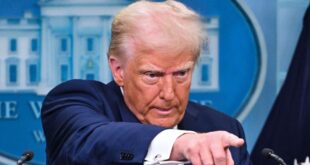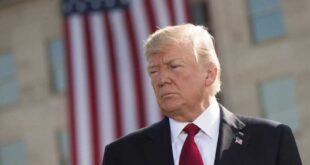The start of the year 2023 was marked by a series of statements coming from representatives of BRICS countries concerning plans to create new currencies. In particular, Brazil’s President Lula called for the creation of common currencies among BRICS and MERCOSUR countries, while Russia’s Foreign Minister Sergey Lavrov stated that the creation of the BRICS common currency would feature in the discussions at the BRICS summit to be held in South Africa this year. And even as a lot of these changes in the international monetary system will take time, the vector of this transformation is becoming increasingly clear. The new international monetary system will be increasingly geared towards the creation of new regional currencies that will aspire to take on a global reserve status alongside the current pantheon of the select currencies of advanced economies. A multi-regional international monetary system in which the key regions of the developing world form their regional currencies may offer greater optionality to the global financial markets and will reduce the dependency on the few select reserve currencies.
A fragmented global financial system consisting almost exclusively of national currencies leaves scope for excessive dependency on the currency of the dominant economy. This in turn creates sizeable vulnerabilities in the form of a “moral hazard” and “too big to fail” considerations – the debt ceiling in the US is duly elevated to avoid default, while the “exorbitant privilege” of the US dollar as the global reserve currency is feeding “moral hazard” patterns in the form of greater fiscal profligacy and the emergence of related theories such as MMT.
As stated in the recent IMF report, “despite the weaknesses of the current reserve system (the “New Triffin dilemma”) any significant shifts away from the status quo are only possible if and when there are viable alternatives to the dominant currencies.”[1] . This recognition by the Fund of the fundamental weakness of the current monetary system (while conditional on the emergence of alternatives) is an important testament to the rising doubts regarding the “infallibility” of the current monetary system. One way to look at some these deficiencies is to realize that high inflation in advanced economies is currently undermining the value of these countries’ state debt – the ratio of US state debt to GDP by the end of 2022 declined by nearly 9% of GDP compared to Q1 2021 on the back of an inflated (due to price growth) nominal GDP. This depreciation in the value of US public debt is adversely affecting the reserve holdings of those countries that have opted to invest heavily in US dollar-denominated assets. At the same time, along with the inflation-related reduction in the debt-to-GDP ratio the nominal stock of US debt continued to grow and forced repetitive increases in the US debt ceiling over the past years. This time around in 2023 the risk of a US default due to the fragilities in the balance of power in US legislature came as yet another scare to emerging markets and a reminder of the perils of high dependency on one sole center of “gravity” in the global economy.
To overcome this high dependency and the fragmentation of the currency space in the Global South developing countries can form larger currency blocks – whether regional (as in the case of the proposed currency for MERCOSUR economies) or transregional (as is the case with the proposed R5 BRICS currency basket). This process of aggregation in currency unions across the Global South if continued may lead eventually to the formation of currencies with sufficient economic weight in terms of the underlying GDP and reserve size of members to merit their inclusion into the group of global reserve currencies.
The international monetary system formed on the basis of macro-regional currency unions will present greater opportunities for advancing new candidates for the position of global reserve currencies. Across the Global South there may be at least three regional currencies with sufficient economic weight to be potentially included into the set of global reserve currencies:
- A Latin America common reserve currency
- An African common reserve currency
- An Asian common reserve currency
The Latin American track has already been promulgated by Lula da Silva in Brazil. In Africa the formation of the AfCFTA as well as the rising global prominence of the African Union (likely to become a full-fledged member of the G20 in the coming years) bode well for gradually moving towards greater coordination in the economic policies of not only the national economies of the African continent, but also its regional integration and currency arrangements. In Asia, several proposals have already been unveiled in the past several years, including the possible creation of a Pan-Asian single currency as well as a common currency for the members of the Shanghai Cooperation Organization.
All these regional currencies have the potential to carry enough economic weight and scale in the form of their respective integrated regional blocks to enable them to attain the global reserve currency status. The potential for regional currencies to become integral parts of the global financial system is expanded by the optionality in the modalities of regional currencies/regional agreements in the monetary sphere that may include:
- Regional baskets
- Regional currencies that replace existing national currencies
- Regional swap lines
- Digital regional currencies/currency baskets
- Regional accounting units
The new currencies, whether regional or trans-regional, will need an anchor or a reference point, a role that has thus far been primarily filled by the US dollar and the euro. The rise of China as the main trading partner of the economies of the Global South implies that it may be time for the developing economies to change the reference point away from the dollar and the euro towards the yuan and/or the BRICS reserve currency (in which the yuan would likely take a sizeable share). In particular, those developing economies with fixed/pegged exchange rate regimes could consider the possibility to shift towards pegging their currencies to the BRICS basket and/or employing this new currency increasingly as an accounting unit. This would accord well with the trends of the past decade characterized by growing importance of South-South trade; it would also provide more favourable conditions for further expediting the diversification of foreign trade and investment towards the South-South track after decades of under-trading among the developing economies (including among the regional partners in the developing world).
The latter point may need some elaboration – for decades the trading patterns of the developing economies were largely characterized by high shares of trade with the leading advanced economies such as the US and the EU and lower-than-potential trade shares accorded to the regional neighbours of these economies. The indications of the gravity model that traces trade intensity to distance among countries and their economic weight (as measures by GDP) suggest that there is tremendous potential to boosting regional trade given the lower gravity of distance. Regional economic integration and the creation of regional currencies, like the planned launching of the regional currency SUR in Latin America, would serve to realize this potential for South-South regional trade for the benefit of global economic growth.
The three key pillars of a revitalized international monetary system will need to include the following Post-Bretton Woods principles, or 3D principles as per below:
- Demonopolization (Poly-centricity): a system that is predicated on a set of reserve currencies that include a number of regional currencies as well as possibly trans-regional baskets of currencies – the resulting pattern is that of a co-existence of reserve currencies from EM and DM without a “core-periphery” pattern setting in the global monetary system
- Depoliticization: the new international monetary system will also need to contain a “de-politicization clause” as one of its key foundations – the reserve currencies will need to carry a legal affirmation of the non-use of these currencies in imposing sanctions and other restrictions
- Dis-inflation: with the “exorbitant privileges” of the DM currencies dissipating, inflationary fragilities in the global monetary system may be attenuated; at the same time the competitive edge in the global monetary system will start to gravitate towards those currencies that are credibly backed up with reserves/resources.
Compared to the unidimensional paradigm of the current monetary system, these 3D principles are meant to render the vision of the international monetary system more objective and real – the new system needs to reflect the changing realities and dynamics in the world economy, including the emergence of new regional economic centers; it also needs to address the growing demand on the part of the international community for currencies to be real, i.e. duly supported by countries’/regions’ reserves/resources.
Another way to picture the 3D vision for the international monetary system is to introduce a regional layer into the monetary system that is represented by the regional integration blocks, their currencies and development institutions. This regional layer would complement the layers of national economies at the bottom and the global economic institutions (such as the IMF and the World Bank) at the top. The main ingredients for the regional layer of the international monetary system are largely in place and consist of the following three key elements:
- Regional financing arrangements (RFAs)
- Regional development banks (RDBs)
- Regional currency mechanisms
For the financial markets an international monetary system characterized by the emergence of regional economic and currency blocks may result in a decoupling of emerging markets (EM) from developed economies (DM) – contrary to the current paradigm whereby the dominance of US and EU financial markets determine to a large degree the overall direction of market dynamics in the developing world.
In the end, the international monetary system is not out of the woods just yet – the fragilities that resulted in the rising frequency of global downturns throughout the past several decades are yet to be addressed. One of the key pathways out of the limitations of the current Bretton Woods setup is to expand the array of reserve currencies with the new regional currencies that could emerge in the Global South. The evolving international monetary system cannot be disassociated from the future progression of the global economy, including its trade structure and patterns of investment flows. In this respect the regionalization of the global economy and the rise in the prominence of trading blocks and their regional development institutions (regional development banks and regional financing arrangements) will increasingly call for greater regionalization of the international monetary system.
 Geostrategic Media Political Commentary, Analysis, Security, Defense
Geostrategic Media Political Commentary, Analysis, Security, Defense





